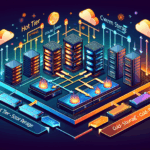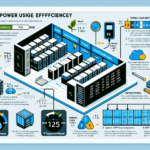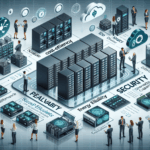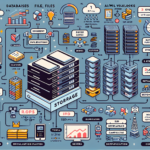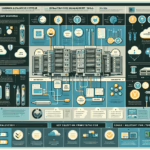The Tier system for datacenters, established by the Uptime Institute, is a globally recognized standard for evaluating the reliability, availability, and redundancy of datacenter infrastructure. The tiers range from 1 to 4, with Tier 4 being the most robust. Below is an explanation of each tier:
Tier 1 Datacenter
- Description: Basic infrastructure offering minimal redundancy.
- Key Features:
- Single path for power and cooling distribution (no redundancy).
- No backup systems or failover mechanisms.
- Expected uptime: 99.671% (~28.8 hours of downtime annually).
- Suitable for small businesses or non-critical operations.
- Use Case: Small-scale applications or environments where downtime is acceptable.
Tier 2 Datacenter
- Description: Improved reliability with partial redundancy.
- Key Features:
- Redundant components for power and cooling (e.g., backup generators, UPS systems).
- Single path for distribution (limited fault tolerance).
- Expected uptime: 99.741% (~22 hours of downtime annually).
- Can handle planned maintenance without downtime.
- Use Case: Medium-sized businesses or organizations needing better reliability but not mission-critical environments.
Tier 3 Datacenter
- Description: High reliability with N+1 redundancy.
- Key Features:
- Multiple power and cooling paths (1 active and 1 redundant).
- Fault-tolerant infrastructure that allows maintenance without disrupting operations.
- Expected uptime: 99.982% (~1.6 hours of downtime annually).
- Continuous cooling and uninterruptible power supply.
- Use Case: Enterprises or mission-critical environments requiring high availability.
Tier 4 Datacenter
- Description: The highest level of reliability with 2N redundancy.
- Key Features:
- Fully redundant power and cooling systems (dual-active paths).
- Fault-tolerant infrastructure designed for zero downtime.
- Expected uptime: 99.995% (~0.26 hours or 15 minutes of downtime annually).
- Can handle unplanned outages and maintenance without affecting operations.
- Use Case: Large-scale enterprises, financial institutions, healthcare systems, or applications requiring maximum uptime and reliability.
Summary Table of Comparison
| Tier | Redundancy Level | Expected Uptime | Downtime per Year | Use Case |
|———-|———————–|———————|————————|——————————-|
| Tier 1 | No redundancy | 99.671% | ~28.8 hours | Small businesses |
| Tier 2 | Partial redundancy | 99.741% | ~22 hours | Medium-sized businesses |
| Tier 3 | N+1 redundancy | 99.982% | ~1.6 hours | Enterprises, mission-critical |
| Tier 4 | 2N redundancy | 99.995% | ~15 minutes | Large-scale operations |
Key Considerations When Choosing a Tier Level:
- Cost: Higher tiers are more expensive due to advanced infrastructure and redundancy.
- Criticality: Assess how much downtime your business can tolerate.
- Scalability: Consider future growth and whether your datacenter can handle increased capacity.
- Compliance: Some industries (e.g., finance, healthcare) may require higher-tier datacenters for regulatory compliance.
By understanding these differences, you can choose the appropriate tier for your datacenter based on your organization’s needs and budget.

Ali YAZICI is a Senior IT Infrastructure Manager with 15+ years of enterprise experience. While a recognized expert in datacenter architecture, multi-cloud environments, storage, and advanced data protection and Commvault automation , his current focus is on next-generation datacenter technologies, including NVIDIA GPU architecture, high-performance server virtualization, and implementing AI-driven tools. He shares his practical, hands-on experience and combination of his personal field notes and “Expert-Driven AI.” he use AI tools as an assistant to structure drafts, which he then heavily edit, fact-check, and infuse with my own practical experience, original screenshots , and “in-the-trenches” insights that only a human expert can provide.
If you found this content valuable, [support this ad-free work with a coffee]. Connect with him on [LinkedIn].
